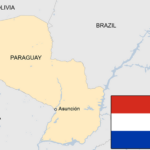My maternal grandmother passed away last year. She was 101. She didn’t tell me many stories when I was growing up, in contrast to my paternal grandmother, but she did tell me a few here and there when I was an adult and would visit my hometown every few years. When I was researching my family tree, I interviewed her for information, and at one point in that conversation, she told me about her “Uncle Pearl.”
Minnie “Pearl” Howard was the daughter of the sister of my great great grandmother. It was her mother who was my aunt – my great great aunt and, therefore, Uncle Pearl was, in fact, my first cousin thrice removed.
Uncle Pearl was born in 1896. She lived all of her life in Alabama. And, according to my grandmother, Uncle Pearl was called “Uncle” because she wore men’s clothes and dated a woman.
According to the 1930 United States Federal Census, Uncle Pearl was living with her mother in Perry County, Alabama, in a home they owned. She was 34 years old, though the Census form lists her birth year incorrectly. She’s listed as the head of the household, as single, and as working as a farmer. The census says she didn’t attend school but that she could read and write. At the top of the census form, for everyone listed on that particular form, it says that the “township or other division of county” for where she lived is Scott or Scotts Beat, District 4 in Perry County. There is no Scotts or Scotts Beat listed on any modern maps of Alabama, but after a lot of searching, I found some obituary online for someone I don’t know that says “Scott’s Beat” is “about eight miles west of Marion.”
I never asked more questions about her when my grandmother said why she was called “Uncle Pearl” because I was so shocked that my grandmother was talking about such a thing – my brain completely froze. My grandmother was deeply religious – she was a Baptist and her husband, my grandfather, was a Methodist and after more than 75 years of marriage, on his deathbed, she STILL tried to get him dunked! But there she was, telling me matter-of-factly that my first cousin thrice removed dressed as a man and dated a woman – no judgment, no condemnation. She could have been telling me her hair was blond and had a mule named Daisy.
I like to imagine Uncle Pearl at 30 or so, in a formal men’s suit, hair slicked back, looking like Marlene Dietrich. Maybe she’s wearing a beret. Elegant. Mysterious. But the reality is that, as a farmer in very rural Alabama, she was probably in denim overalls and boots most of the time, not at all elegant, maybe even being perceived as a man by people who saw her and didn’t know her. Further contributing to the denim overalls and boots theory is that she died February 14, 1971, gored to death by a cow that she was trying to separate from a calf. The article says she was “one of the largest cotton and cattle farmers in this part of the state, operating a farm of almost a thousand acres, partly in Hale County and the remainder in Perry.”
Uncle Pearl died at 65. She’s buried at Mount Hermon United Methodist Church Cemetery in Mount Hermon, Hale County, Alabama.
With no legal spouse and no children, I’m afraid she’s going to be lost to history – as most of us are. But I don’t want her to be. Even if she didn’t look like Marlene Dietrich.
You can read more about Uncle Pearl’s Alabama brothers and the mystery I’m trying to solve about them here.














Leave a Reply